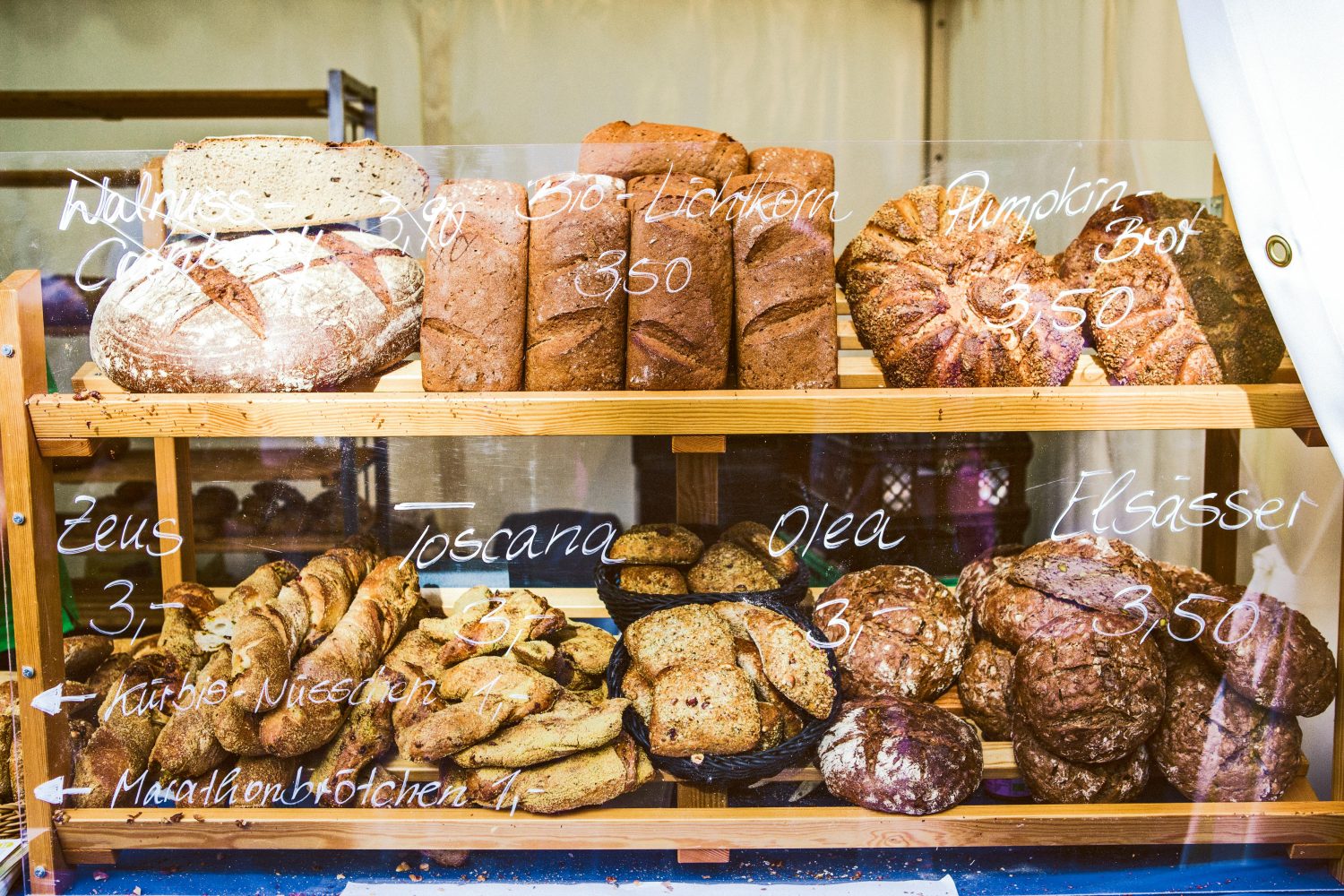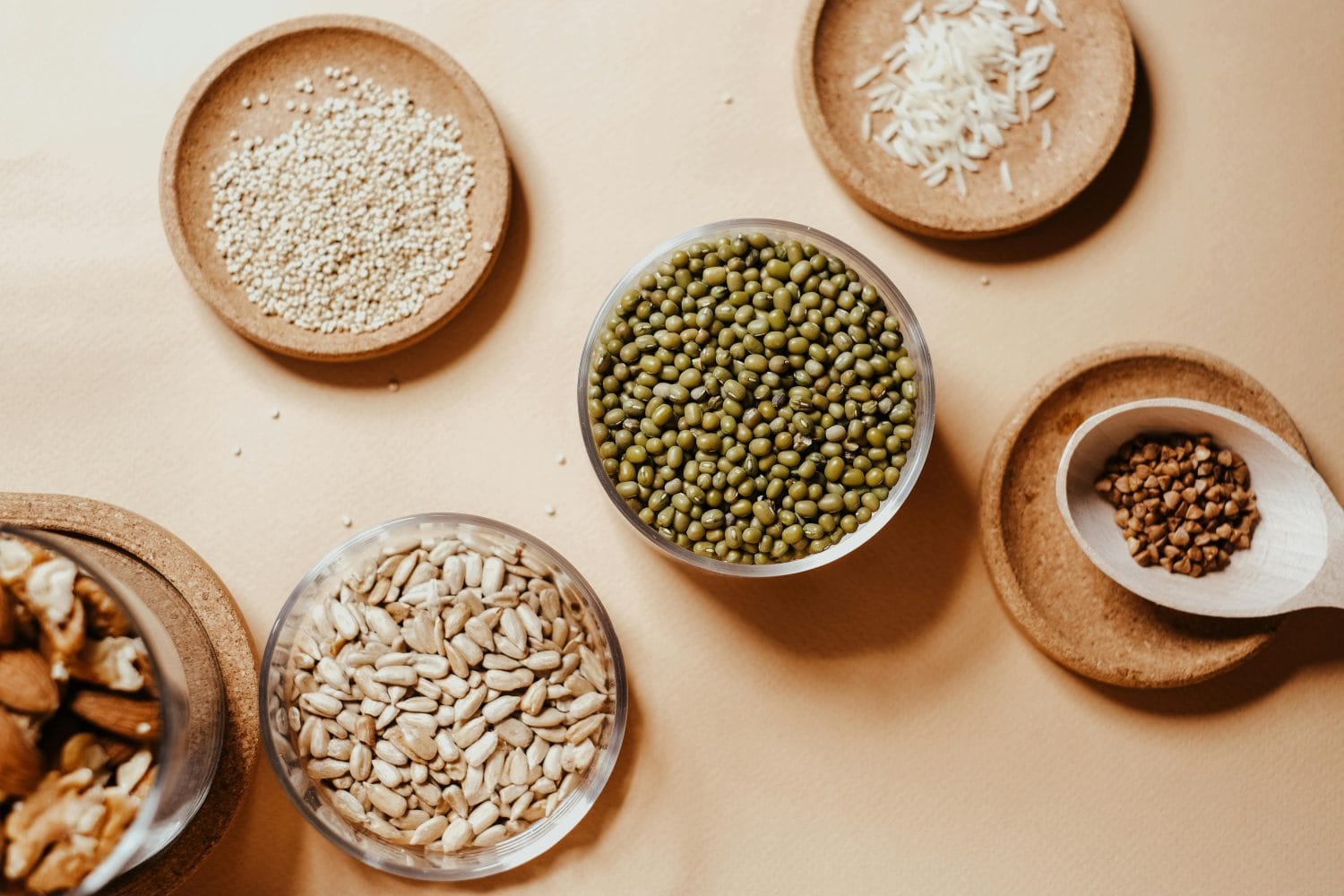Gluten-free diet – benefits, products & tips
In a world where more and more people are rethinking their eating habits and looking for healthier alternatives, the gluten-free diet is becoming increasingly important. But what exactly does it mean to eat gluten-free and why is it more than just a trend for some people? Gluten, a protein found in many grains, can cause serious health problems for people with coeliac disease or gluten intolerance. For them, a gluten-free diet is not a choice, but a necessity to avoid ailments such as gastrointestinal discomfort, skin rashes and fatigue. But a gluten-free diet is not only important for people with gluten intolerance. More and more people are consciously choosing to eliminate gluten from their diet to improve their overall health, reduce digestive problems or boost their energy levels.
What is gluten?
Gluten is a protein found in various cereals, especially wheat, barley, rye and their derivatives. It consists of two main protein groups: Gliadin and glutenin. These proteins are responsible for the elastic structure of dough and give baked goods such as bread, cakes and pasta their characteristic consistency.
For most people, gluten is harmless and an important source of protein in their diet. However, gluten can cause serious health problems for people with coeliac disease, an autoimmune disorder, or gluten intolerance.
In people with coeliac disease, eating gluten triggers an immune response that leads to inflammation in the intestines. This can lead to damage to the intestinal wall and impair the absorption of nutrients. In the long term, untreated coeliac disease can lead to serious health complications such as nutritional deficiencies, osteoporosis and even bowel cancer.
Gluten intolerance, also known as non-celiac gluten sensitivity, is a less severe form of gluten intolerance. People with gluten intolerance experience symptoms similar to those of coeliac disease, but without the characteristic immune reactions and damage to the intestinal wall. The exact causes and mechanisms of gluten intolerance are not yet fully understood, but many people report an improvement in their symptoms on a gluten-free diet.
In the next sections, we will take a closer look at how gluten-free diets can help people with coeliac disease and gluten intolerance to improve their health, and why more and more people are choosing a gluten-free diet even without a diagnosed gluten intolerance.

Coeliac disease and gluten intolerance
Celiac disease and gluten sensitivity are two distinct disorders caused by intolerance to gluten, but they have different effects on the body.
Celiac Disease: Celiac disease is an autoimmune condition in which the body’s immune system perceives gluten as a threat and triggers an immune response. This reaction results in inflammation of the lining of the small intestine, which can damage the intestinal villi. This impairs the body’s ability to absorb nutrients from food, leading to a range of symptoms and long-term complications. Symptoms of celiac disease include:
- Abdominal pain
- Bloating
- Diarrhea
- Weight loss
- Fatigue
- Anemia
- Skin rash (Dermatitis herpetiformis)
Gluten Sensitivity: Gluten sensitivity, also known as non-celiac gluten sensitivity, is a less severe condition in which people experience symptoms similar to those of celiac disease without exhibiting the characteristic intestinal damage or immune response. Symptoms of gluten sensitivity include:
- Abdominal pain
- Bloating
- Diarrhea
- Headaches
- Fatigue
- Joint pain
It’s important to note that some people with celiac disease or gluten sensitivity may have no symptoms, which can make diagnosis challenging.
Diagnosis and Testing
Diagnosing celiac disease and gluten sensitivity typically requires a combination of clinical evaluations, blood tests, and a small intestine biopsy. Blood tests include the tissue transglutaminase antibody (tTG-IgA) test and the endomysial antibody (EMA-IgA) test. A small intestine biopsy can help confirm damage to the intestinal villi, which is characteristic of celiac disease. For gluten sensitivity, other tests may be conducted to rule out other possible causes of the symptoms.
Foods that contain gluten
Gluten is present in many types of grains that are commonly found in our diet. Here is an overview of the main grains containing gluten, as well as examples of foods and products that may contain gluten:
- Grains containing gluten:
- Wheat
- Barley
- Rye
- Spelt
- Kamut
- Triticale (a hybrid of wheat and rye)
- Foods and products that may contain gluten:
- Bread and baked goods: White bread, whole wheat bread, baguettes, rolls, croissants, pastries, cakes, cookies, cereal bars
- Cereal products: Oats (if not explicitly labeled as gluten-free), muesli, breakfast cereals, couscous, bulgur, barley groats
- Pasta: Pasta, noodles, spaghetti, gnocchi
- Baking mixes: Ready-made mixes for cakes, pancakes, waffles, pizza, bread
- Ready-made products and snacks: Bread crumbs, croutons, soy sauce, ready meals, soups and sauces (may contain wheat flour as a thickener), chips (if seasoned or flavored)
- Sweets: Chocolate, confectionery, candies (sometimes made with gluten-containing ingredients such as grains or wheat flour)
- Beer and malt beverages: Beer, ale, lager beer, some malt beverages
It is important to carefully read food labels and look for gluten, especially in processed foods and products where it may not be obvious whether they contain gluten. For people with gluten intolerance or celiac disease, it is advisable to seek out gluten-free alternatives and to be informed about products specifically made for gluten-free diets.

The benefits of a gluten-free diet
A gluten-free diet can offer various health benefits, especially for people with celiac disease, gluten intolerance, or certain health conditions. Here are some of the potential benefits of a gluten-free diet:
Health benefits of a gluten-free diet:
- Reduced risk of gastrointestinal discomfort: For people with celiac disease or gluten intolerance, avoiding gluten can help alleviate symptoms such as abdominal pain, bloating, diarrhea, or constipation, and improve digestive system health.
- Anti-inflammatory effects: Some studies suggest that a gluten-free diet may have anti-inflammatory properties, which can be particularly beneficial for people with inflammatory conditions such as rheumatism, arthritis, or inflammatory bowel disease.
- Potential improvement of autoimmune diseases: In some people with autoimmune diseases such as Hashimoto’s thyroiditis or rheumatoid arthritis, a gluten-free diet may help reduce inflammation and alleviate symptoms, although further research is needed to confirm this association.
Improvement of digestive problems and gastrointestinal discomfort:
- Reduced discomfort in people with celiac disease or gluten intolerance: Avoiding gluten can help alleviate digestive problems such as abdominal pain, bloating, diarrhea, or constipation, and improve quality of life.
- Better nutrient absorption: People with celiac disease or gluten intolerance often suffer from impaired nutrient absorption due to damage to the intestinal villi. A gluten-free diet can repair this damage, leading to improved absorption of nutrients such as iron, calcium, vitamin B12, and other essential nutrients.
Potential effects on energy levels, skin health, and weight management:
- Increased energy levels: Some people report an increase in energy levels and improved overall vitality after transitioning to a gluten-free diet.
- Better skin health: For some individuals, a gluten-free diet may help reduce skin problems such as acne, eczema, or psoriasis, and improve skin health.
- Support for weight management: For some people, a gluten-free diet may help with weight loss or maintaining a healthy weight, especially if they have previously suffered from digestive problems caused by gluten.
However, it is important to note that a gluten-free diet is not suitable for everyone and is not automatically healthier than a balanced diet that includes gluten. People considering a gluten-free diet should discuss this with a doctor or dietitian to ensure they receive all necessary nutrients and avoid deficiencies or health issues.
Tips for a gluten-free diet
A gluten-free diet requires some adjustments, but with the right knowledge and resources, it is entirely feasible. Here are some tips and advice for a balanced gluten-free diet:
- Familiarize yourself with gluten-free alternatives:
- Explore alternative gluten-free grains such as rice, corn, millet, buckwheat, quinoa, and amaranth. These can serve as staples in your diet and complement a variety of dishes and recipes.
- Discover gluten-free foods such as pasta, bread, flour, cereal, snacks, and baked goods available in specialized food stores or online.
- Meal planning and preparation:
- Plan your meals in advance and ensure you choose balanced and varied options that cover all nutrients.
- Prepare your meals at home using fresh, unprocessed ingredients to maintain control over your diet and avoid hidden gluten.
- Reading labels and avoiding hidden gluten:
- Learn to read labels of processed foods and look for hidden gluten. Gluten may appear under various names, such as wheat flour, barley malt extract, or rye.
- Be cautious with foods that often contain gluten, such as sauces, soups, marinades, ready-made meals, deli meats, and sweets.
- Communication with restaurants and hosts:
- Inform restaurants about your gluten-free needs when dining out and inquire about gluten-free options on the menu.
- When attending events or invitations, inform your hosts in advance about your dietary restrictions so they can prepare appropriate options.
- Use of gluten-free recipes and cookbooks:
- Explore gluten-free recipes and cookbooks to discover new and inspiring dishes that delight your palate and meet your dietary needs.
- Experiment with different gluten-free ingredients and preparation methods to develop your personal taste and preferences.
By following these tips and advice, you can ensure that your gluten-free diet is balanced, varied, and satisfying while promoting your health and well-being.
Products for a gluten-free diet
Gluten-free products are now widely available and can be found in many grocery stores. These specially designed foods are intended for people with celiac disease and gluten intolerance, providing a variety of options for a varied diet. Here are some examples of gluten-free products:
- Gluten-free grains: These include quinoa, rice, corn, buckwheat, and millet. These grains are naturally gluten-free and can serve as the basis for many gluten-free dishes.
- Gluten-free baked goods: There is a variety of gluten-free baked goods such as bread, rolls, cakes, and pastries that are specially made without gluten. These products are often made from gluten-free flours such as rice flour, almond flour, coconut flour, or buckwheat flour.
- Gluten-free pasta and noodles: Gluten-free pasta is made from alternative flours such as rice, corn, quinoa, or chickpeas, providing a good alternative to traditional pasta.
- Gluten-free snacks and sweets: Many snack products like chips, popcorn, nuts, and chocolate are naturally gluten-free. There are also special gluten-free candies and snack bars made without gluten-containing ingredients.
- Gluten-free sauces and seasoning blends: Many sauces, dressings, and seasoning blends are gluten-free, especially when made from natural ingredients. However, it’s important to check the labels as some products may contain gluten-containing additives.
- Gluten-free breakfast products: These include gluten-free cereals, oatmeal, pancake mixes, and breakfast bars specifically developed for a gluten-free diet.
When purchasing gluten-free products, it’s important to read the labels carefully and ensure they are certified as “gluten-free,” especially if they could have come into contact with gluten-containing products. Additionally, people with celiac disease or gluten intolerance should be mindful of hidden sources of gluten in processed foods and may need to contact manufacturers to ensure their products are safe. In addition to gluten-free grains, baked goods, and snacks, the range of gluten-free products also includes dietary supplements that play an important role in the intake of vitamins and minerals to ensure a balanced diet.

Challenges with a gluten-free diet
A gluten-free diet can present some challenges, making it important to be aware of potential pitfalls and deficiencies.
- Common Mistakes in a Gluten-Free Diet:
- Insufficient knowledge about hidden gluten in foods can lead to accidentally consuming gluten-containing products.
- Excessive consumption of gluten-free substitutes such as gluten-free bread, pasta, and snacks can lead to an unbalanced diet, as these often contain fewer fiber and nutrients than their gluten-containing counterparts.
- Neglecting the importance of fresh, unprocessed foods in favor of processed gluten-free products.
- Potential Nutrient and Fiber Deficiencies:
- A gluten-free diet can lead to deficiencies in certain nutrients and fiber, especially if attention is not paid to a balanced diet.
- Possible deficiencies include iron, calcium, vitamin B12, folic acid, and fiber, which are typically found in gluten-containing grains such as wheat, barley, and rye.
- Social and Emotional Challenges When Eating Outside the Home:
- People following a gluten-free diet may feel challenged in social situations and when dining out, as gluten-free options are not always available.
- The need to explain your dietary needs and make special requests in restaurants can lead to discomfort and stress.
- Feelings of exclusion or isolation may arise when feeling different from others, especially in societies where gluten-containing foods are common.
By being aware of these challenges and developing strategies to address them, you can ensure that your gluten-free diet is successful and satisfying. A balanced diet based on fresh, unprocessed foods can help avoid potential deficiencies and promote your health and well-being.
Conclusion
Overall, a gluten-free diet offers a variety of potential benefits for people with coeliac disease, gluten intolerance or those who choose to do so for other reasons. However, proper implementation requires knowledge, planning and awareness of potential challenges.
It is important to understand that a gluten-free diet is not for everyone and that individual needs and circumstances must be considered. Individuals considering a gluten-free diet should ideally seek advice from a dietitian or doctor to ensure their diet is balanced and appropriate.
Following tips on choosing foods, reading labels and avoiding pitfalls can help ensure that the gluten-free diet is successfully implemented. Despite potential challenges, a well-planned gluten-free diet offers the opportunity to improve health, alleviate digestive issues and enhance overall well-being.
By being intentional about your diet and focusing on fresh, unprocessed foods, you can ensure that your gluten-free diet is both healthy and satisfying.
